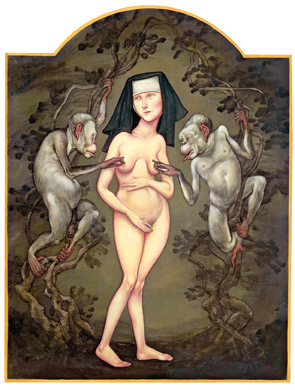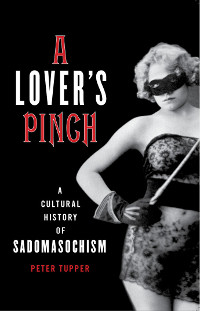
My article on the strange case of Maria Monk and her connections to anti-Catholic propaganda and the nun as a fetish archetype has been published in Maisonneuve magazines 10th anniversary issue. (Print only, for the moment. And no, I don’t know what the monkeys are doing in the illustration.)
This was my first article in a national, glossy magazine for a while, and I hope this carries with it some prestige. It took several rewrites to get it done, but overall it looks pretty good. There’s only so much you can do in 1,500 words.
I had wanted to include a comparison between Awful Disclosures of Maria Monk and Story of O, since both are narratives of initiation. I wonder if there’s a more direct connection, if as a girl Anne Desclos (aka Pauline Reage) read some bit of Gothic pulp or anti-Catholic tract and it gestated in her mind the way Anna Freud remembered a snippet from a book about book on medieval knights and wove that into her fantasies.
An excerpt from an early draft:
While the content of Awful Disclosures and related works survive to this day mainly in anti-Catholic crank conspiracy literature, the format has been stripped of any overt political or religious message and used in a variety of pornographic works. The classic Story of O (1954), written by Anne Desclos (who once flirted with the idea of being a nun), follows a similar structure to Awful Disclosures. Like Maria Monk, O is initiated into a secret society where she is to serve her new masters sexually. The orders O receives echo the Mother Superior’s commandments to Maria Monk: “You are here to serve your masters… Your hands are not your own, nor are your breasts, nor, most especially, any of your bodily orifices, which we may explore or penetrate at will… both this flogging and the chain… are intended less to make you suffer, scream, or shed tears than to feel through this suffering, that you are not free but fettered, and to teach you that you are totally dedicated to something outside yourself.”
If Disclosures uses transgressive sexuality to deliver a warning of the dangers of transgressive religion, O is a sexual fantasy built on nun-like selfless devotion. Maria Monk returns to the Protestant world to bear witness, but O throws herself deeper and deeper into the underworld, attaining a kind of martyrdom.
I also wanted to include PETA’s campaign of images of people (usually attractive women) as animals in cages or even as packed meat products, images that require only the slightest shift in optic to become pornographic.






